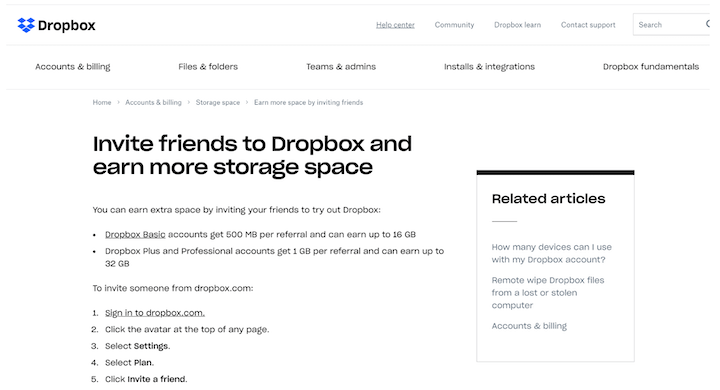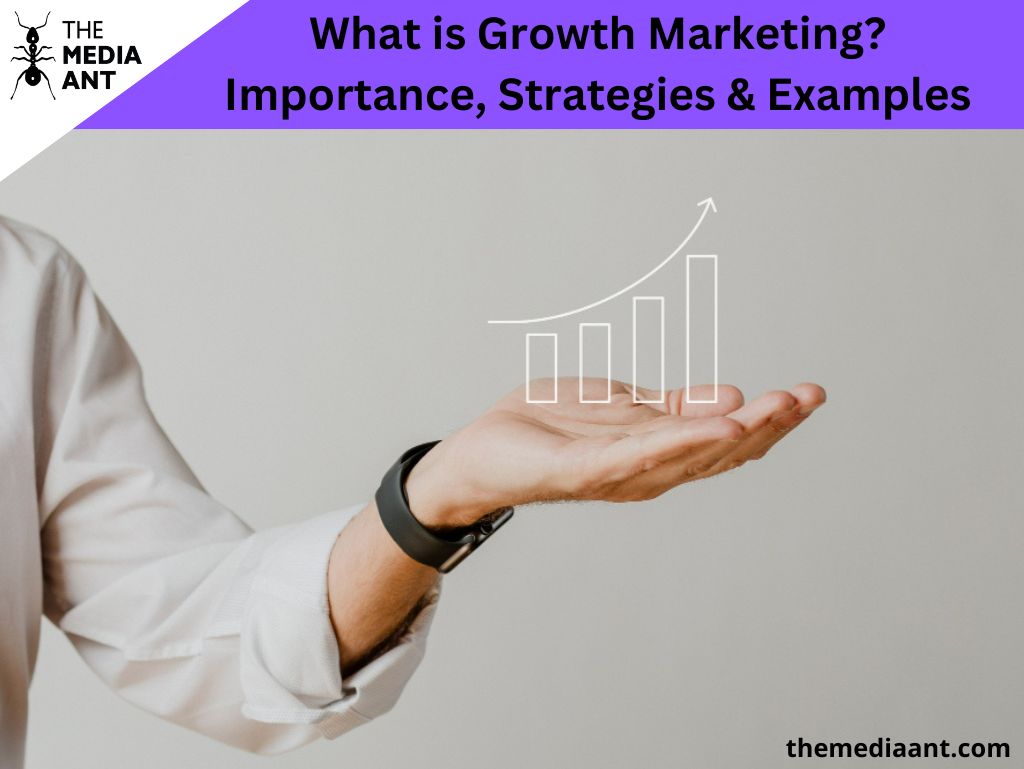Have you ever wondered how certain companies achieve rapid and sustainable business growth while leaving their competitors in the dust? Well, that’s where Growth Marketing comes into play. It’s like unleashing a marketing superpower that combines data-driven strategies, innovative tactics, and a sprinkle of magic to skyrocket your business to new heights. So get ready to dive into the thrilling realm of Growth Marketing, where we’ll uncover the secrets behind driving unstoppable growth and success.
What is Growth Marketing?
Growth marketing is a strategic marketing approach that focuses on achieving rapid and sustainable business growth. It involves utilizing data-driven tactics and experiments across the entire customer journey to drive user acquisition, engagement, and retention. Unlike traditional marketing, which often focuses on brand awareness and broad audience targeting, growth marketing emphasizes measurable results and prioritizes strategies that directly impact revenue and customer acquisition.
Growth marketers employ a combination of analytical skills, creativity, and technological tools to identify and leverage growth opportunities. They conduct extensive research, analyze data, and develop targeted campaigns to optimize key metrics such as conversion rates, user engagement, and customer lifetime value. Growth marketing often involves A/B testing, iterative experimentation, and optimization based on real-time feedback.
The ultimate goal of growth marketing is to achieve sustainable, scalable, and rapid growth by continuously identifying and capitalizing on opportunities to attract and retain customers. It is an iterative and data-driven approach that requires a deep understanding of customer behavior, agile decision-making, and a willingness to test and adapt strategies based on insights gained from data analysis.
Why is Growth Marketing Important?

Growth marketing is important for several reasons:
Rapid and sustainable business growth
Growth marketing focuses on achieving measurable results and driving revenue. By employing data-driven tactics and experimentation, growth marketers can identify effective strategies to attract and retain customers, ultimately leading to business growth.
Cost-effective customer acquisition
Growth marketing emphasizes optimizing key metrics such as conversion rates, which helps acquire customers more efficiently. By targeting specific segments and utilizing data to refine campaigns, growth marketers can reduce customer acquisition costs and maximize returns on marketing investments.
Improved customer engagement and retention
Growth marketing goes beyond acquiring new customers; it also focuses on increasing customer engagement and fostering long-term relationships. By understanding customer behavior and preferences, growth marketers can develop personalized campaigns, improve user experience, and increase customer loyalty and retention.
Agility and adaptability
In a rapidly evolving business landscape, growth marketing allows companies to be agile and adapt quickly to changing market conditions. Through continuous experimentation and optimization, growth marketers can identify new growth opportunities, stay ahead of competitors, and respond effectively to customer needs.
Data-driven decision-making
Growth marketing heavily relies on data analysis and measurement. By leveraging data insights, growth marketers can make informed decisions, identify trends, and allocate resources effectively. This data-driven approach enables them to optimize marketing strategies, refine targeting, and enhance overall campaign performance.
Growth marketing plays a crucial role in driving business success by focusing on measurable growth, cost-effective customer acquisition, customer engagement, agility, and data-driven decision-making. It helps companies stay competitive, adapt to changing market dynamics, and maximize their marketing investments.
What makes growth marketing different?
What sets growth marketing apart is its distinct focus on measurable and scalable business growth through data-driven experimentation and optimization. Unlike traditional marketing approaches, growth marketing prioritizes key metrics such as conversion rates, customer acquisition costs, and customer lifetime value. It emphasizes continuous testing, iterative improvement, and agile decision-making based on real-time data analysis.
Growth marketers utilize a combination of analytical skills, creativity, and technological tools to identify growth opportunities and optimize marketing strategies. This data-centric and results-oriented approach distinguishes growth marketing from traditional marketing methods that often prioritize brand awareness and rely on more subjective measures of success.
Key Growth Marketing Strategies
Growth marketing is a dynamic and data-driven approach to marketing that focuses on optimizing every stage of the customer lifecycle. Businesses can drive sustainable growth and maximize their revenue potential by employing various strategies. Here are four key growth marketing strategies:
Customers Feedback
Collecting and leveraging customer feedback is crucial for understanding their needs, preferences, and pain points. By actively listening to customers, businesses can identify areas for improvement, refine their products or services, and enhance the overall customer experience. Utilizing feedback surveys, interviews, social media monitoring, and online reviews enables companies to make data-driven decisions and build stronger customer relationships.
A/B Testing
A/B testing involves creating two or more variants of a marketing element, such as a web page, email, or advertisement, and measuring their performance to determine the most effective version. Businesses can optimize their marketing efforts based on user behavior and preferences by testing different variables, such as headlines, call-to-action buttons, or layouts. A/B testing provides valuable insights into customer preferences, allowing marketers to make informed decisions and continuously improve their campaigns.
Multi-Channel Marketing
In today’s digital landscape, customers engage with brands through various channels, including social media, email, search engines, and offline channels. A successful growth marketing strategy involves reaching customers across multiple touchpoints and delivering a consistent brand experience. Businesses can expand their reach, enhance brand visibility, and effectively engage with their target audience by leveraging a mix of channels and tailoring messages to specific platforms.
Lifecycle of Customers
Understanding the customer lifecycle is crucial for developing personalized marketing strategies and maximizing customer lifetime value. The customer lifecycle typically consists of stages such as awareness, acquisition, onboarding, retention, and advocacy. By identifying customers’ unique needs and behaviors at each stage, businesses can deliver targeted messaging, nurture customer relationships, and drive repeat purchases. Applying segmentation, automation, and personalized content enables companies to effectively guide customers through the lifecycle, fostering long-term loyalty and advocacy.
Growth marketing strategies such as customer feedback, A/B testing, multi-channel marketing, and customer lifecycle optimization are essential for businesses to drive sustainable growth, enhance customer experiences, and stay ahead in a competitive market. By combining data-driven insights with strategic implementation, companies can effectively acquire, retain, and nurture their customer base, leading to long-term success.
Qualities of Growth Marketer

A growth marketer possesses several key qualities that contribute to their success in driving sustainable growth for a business. These qualities include:
- Analytical mindset: A growth marketer is data-driven and possesses strong analytical skills. They are adept at interpreting data, conducting experiments, and deriving insights to optimize marketing strategies.
- Creativity: A growth marketer thinks outside the box and comes up with innovative ideas to capture the target audience’s attention. They are capable of creating compelling and engaging campaigns that resonate with customers.
- Adaptability: A growth marketer is flexible and adaptable to changing market dynamics. They quickly embrace new technologies, platforms, and trends and can pivot strategies as needed.
- Curiosity: A growth marketer is curious and constantly seeks to learn and stay updated on the latest marketing trends, consumer behavior, and industry developments.
- Collaboration: A growth marketer understands the value of teamwork and collaborates effectively with cross-functional teams, such as product development, sales, and data analysis, to align goals and drive growth collectively.
- Results-oriented: A growth marketer is focused on achieving measurable results and constantly monitors key performance indicators (KPIs) to track the success of marketing initiatives.
- Customer-centricity: A growth marketer puts the customer at the center of their strategies. They deeply understand customer needs, pain points, and behaviors to deliver personalized and targeted marketing campaigns.
- Experimentation mindset: A growth marketer embraces a culture of experimentation and is willing to take calculated risks to uncover new growth opportunities. They are fearless in testing and iterating on different strategies to find the most effective ones.
- Strategic thinking: A growth marketer takes a holistic view of the business and its market. They develop long-term growth strategies aligned with business objectives, considering both short-term wins and sustainable growth.
- Communication skills: A growth marketer is an effective communicator who can convey complex marketing concepts and strategies to stakeholders and teams. They can articulate their ideas clearly and inspire others to rally behind their vision.
These qualities collectively empower a growth marketer to navigate the ever-changing marketing landscape, drive innovation, and deliver sustainable growth for the business they serve.
Growth Marketing vs Traditional Marketing
Growth Marketing and Traditional Marketing are two distinct approaches to achieving marketing goals. Here’s a comparison of the two:
| Growth Marketing | Traditional Marketing | |
| Focus | Growth marketing, on the other hand, emphasizes a data-driven and iterative approach. It optimizes every stage of the customer lifecycle, from acquisition to retention and advocacy. Growth marketers use strategies, experiments, and channels to achieve sustainable growth and maximize customer lifetime value. | Traditional marketing focuses on promoting products or services to a broad audience through mass media channels such as television, radio, print, and billboards. It relies on one-way communication to create brand awareness and generate immediate sales. |
| Customer Acquisition | Growth marketing takes a more targeted and personalized approach to customer acquisition. It leverages data and analytics to identify specific customer segments and create tailored marketing campaigns. Growth marketers focus on understanding customer behavior, optimizing conversion funnels, and employing tactics such as A/B testing and customer feedback to drive efficient acquisition and conversion rates. | Traditional marketing often employs broad-based targeting and mass advertising to reach a broad audience. The emphasis is on generating leads and acquiring customers through traditional advertising channels. Reach, impressions and response rates typically measure the success of traditional marketing campaigns. |
| Measurement Metrics | Growth marketing emphasizes the use of measurable and actionable metrics. It looks at data points such as customer acquisition cost (CAC), customer lifetime value (CLTV), conversion rates, retention rates, and other key performance indicators (KPIs) to assess campaign effectiveness and ROI. Growth marketers constantly analyze data to make data-driven decisions and optimize strategies for better results. | Traditional marketing relies on metrics such as brand awareness, reach, impressions, and sales volume to evaluate the success of campaigns. Attributing specific results directly to marketing efforts may be challenging, especially in offline channels. |
| Approach | Growth marketing embraces an iterative and agile approach. It involves continuous experimentation, testing, and optimization. Growth marketers use techniques like A/B testing, multivariate testing, and rapid iterations to improve campaign performance based on real-time data and insights. This allows for quick adjustments and optimizations to achieve better results. | Traditional marketing campaigns often follow a linear, planned approach. The messaging and creative assets are developed and deployed for a set period, with limited opportunities for real-time adjustments or optimization during the campaign. |
| Customer-Centricity | Growth marketing takes a customer-centric approach. It aims to understand customer needs, pain points, and motivations. Growth marketers use data and insights to personalize messaging, target specific customer segments, and deliver a seamless customer experience across different touchpoints. The focus is building strong, long-term customer relationships and maximizing lifetime value. | Traditional marketing tends to have a more product-centric focus. It highlights product features, benefits, and brand image to attract customers. However, it may only sometimes deeply consider customers’ individual needs, preferences, and behaviors. |
Growth Marketing Examples
Airbnb: Being the best host

The quality of hosts and property listings is a significant growth hack for Airbnb. When guests have a great experience during their stay, they are more likely to leave positive reviews and high ratings. This, in turn, improves the host’s profile quality and increases the likelihood of new guests choosing their listing over others.
Airbnb introduced the “Superhost” status to encourage excellent host performance, which requires receiving positive guest reviews. Hosts can achieve this status by providing exceptional experiences, such as offering unique amenities or maintaining friendly and responsive communication throughout the guests’ stay. Hosts can leverage positive reviews and ratings by prioritizing guest satisfaction to enhance their visibility and attract more bookings. Ultimately, this growth hack contributes to the overall success and reputation of hosts and Airbnb as a platform.
Dropbox: More space for more users

Dropbox offers a compelling incentive for users to share the platform with others: the opportunity to earn additional storage space. Through its referral system, Dropbox makes it simple for existing users to invite and sign up new users while also displaying a social proof icon that tracks the number of referrals made. The allure of receiving more storage space is so appealing that some individuals have even turned referral activities into a source of income, actively referring to as many friends as possible. By leveraging this incentive-based strategy, Dropbox encourages user engagement and expands its user base through word-of-mouth marketing.
FAQs Related to Growth Marketing
What is the example of growth marketing?
Apple: Social marketing
Apple utilizes social marketing as a key component of its growth campaign. They encourage user-generated content by actively engaging with customers on social media platforms and in physical Apple Stores. By sharing photos and videos of customers interacting with their products, Apple aims to create excitement and encourage customers to share their experiences online, thereby increasing brand reach and exposure. This strategy leverages the power of social media to enhance their marketing efforts and contribute to their overall growth.
What is growth marketing vs marketing?
Growth marketing is a specialized approach within marketing that focuses on driving rapid and sustainable business growth. It emphasizes experimentation, data-driven decision-making, and optimization of various marketing channels to maximize customer acquisition, retention, and revenue. Growth marketers typically employ tactics such as A/B testing, conversion rate optimization, user segmentation, and leveraging analytics to identify growth opportunities and drive measurable results. In contrast, marketing encompasses a broader set of activities to promote products or services, which may or may not prioritize growth as a primary objective.
What are the four growth strategies in marketing?
The four growth strategies in marketing are:
1. Customers Feedback
2. A/B Testing
3. Multi-Channel Marketing
4. Lifecycle of Customers
What is growth marketing in B2B?
In business-to-business (B2B) marketing, growth marketing refers to applying growth-focused strategies and tactics to drive rapid and sustainable business growth in B2B environments. It involves leveraging data, analytics, experimentation, and optimization techniques to acquire and retain B2B customers, maximize revenue, and expand market share within the B2B sector.
What is a growth marketing strategy?
A growth marketing strategy is a proactive and data-driven approach that aims to drive sustainable business growth. It involves developing and implementing tactics such as customer acquisition, retention, and revenue optimization through experimentation, data analysis, and iterative improvements across various marketing channels and touchpoints.
What is an example of marketing growth strategy?
An example of a marketing growth strategy is implementing a referral program where existing customers are incentivized to refer new customers. This strategy leverages the power of word-of-mouth marketing and can lead to increased customer acquisition and business growth.
How do you develop a growth marketing strategy?
Developing a growth marketing strategy involves several key steps:
1. Define goals: Clearly identify your growth objectives and metrics.
2. Understand your target audience: Research to understand your audience’s needs, preferences, and pain points.
3. Analyze data: Utilize data and analytics to identify opportunities, track performance, and make data-driven decisions.
4. Experiment and iterate: Test different strategies, tactics, and channels and continuously optimize based on results.
5. Focus on customer retention: Develop strategies to retain and nurture existing customers.
6. Collaborate and align: Ensure collaboration between marketing, sales, and other relevant teams for a cohesive growth strategy.





